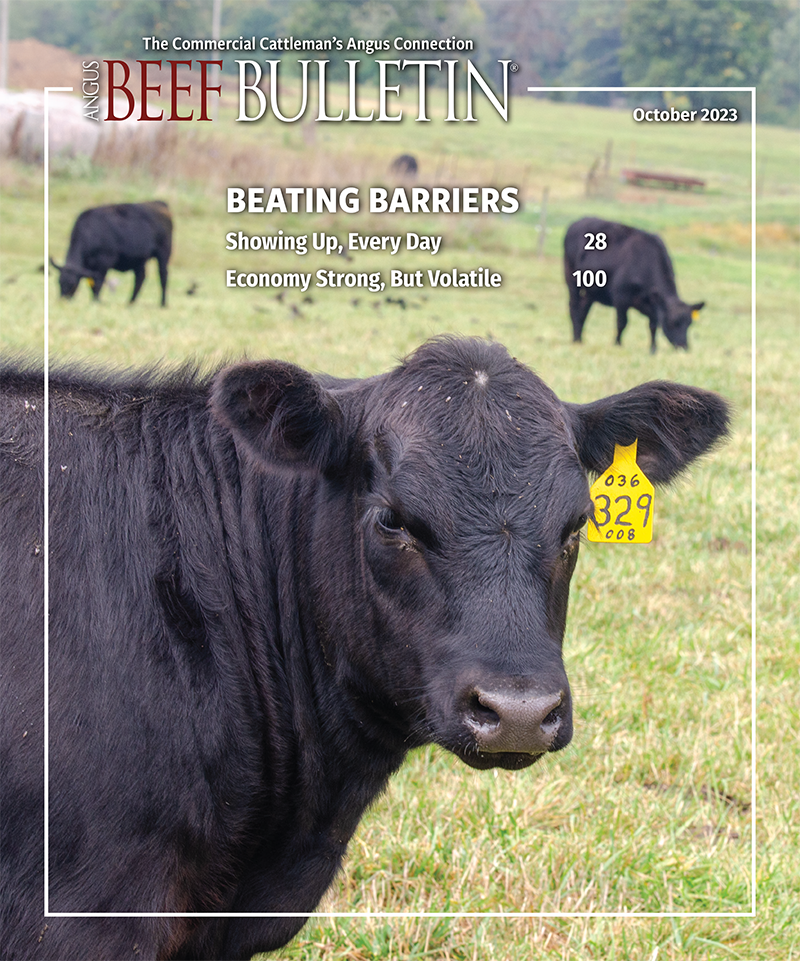
Association Perspective
Roller coaster highs and replacement female markets.
What a summer video run! All major video companies saw record prices in all classes of cattle selling. When the June sales wrapped up, there were some producers thinking they should have taken the chance to market their calves because they felt the markets couldn’t get that much higher.
Fast-forward to July where we saw markets with record prices on yearlings, and the light calves continued to pick up steam. Prices ranged anywhere from 30% to 48% higher on average from 2022. Most video companies reported record numbers of cattle selling in the July sales. Moving forward to August, prices on yearlings pulled back from the records set in late July while prices for light grass-type cattle continued to advance.
On to September — where the sales were substantially smaller in size than those occurring in July or August — markets were steady, but yearlings were still slightly cheaper than July, and the light grass cattle sold well. In September, the highest price for cattle in the Northwest was reported for 650-weight steers at $307. Pricing for heifers lagged behind their steer counterparts in most sales anywhere from $15 to $25 per hundredweight (cwt.) The exception to this would be some of the replacement-type heifer calves, which in some cases sold even with the steers or slightly higher. What a great summer for video consignors!
Fall bull sale season kicked off in California back in September, and the weather was much improved from the previous year when highs reached 120° F for the first week. Demand reflected the greatly improved California grass situation where record snowfall and precipitation this past spring (and minimal fires this summer) made a difference. Producers out West have had a record year for feed production on their annual grasslands. Bull prices in the state were up roughly 15%-20% in most cases and — with a forecast of another wet winter — there should be good demand for replacement cows and pairs out West.
With the Montana Angus Female Bonanza concluding Monday, Oct. 21, the region had its first test of the bred market in volume.
- 1,591 coming 3-year-olds averaged $2,796 (March-April calvers), with a top of $3,125 on a set of straight March calvers and a top of $3,100 on a set of straight April calvers. One lot of 231 head of straight April calvers sold for $3,050 to one buyer.
- 887 AI-bred heifers averaged $2,740 (late February-early March calvers) and 772 pasture-bred heifers averaged $2,423 (late March-April calvers). The top lot of AI-bred heifers brought $3,300 per head.
In the state of Montana so far, 1,912 head of commercial bred heifers have sold for an average of $2,675. This is an increase in price of $708 per head from 2023, which is up 35%.
In all, we’re in a strong market, especially when looking at the challenges that are out there for producers. While cattle prices are good, many challenges still faced this year’s calf crop, affecting profitability in the Intermountain West.
Late spring storms took a toll on newborn calves. An outbreak of stable flies sucked weight off of the calves in the summer and has apparently affected the second cycle (and in some cases first cycle) breed-up on the pasture-bred cows. For the fourth year in a row, grasshoppers came later, but in force, and mowed down a lot of feed from mid-summer through September. The feeder and live board have dropped substantially from the highs in July and early August. Higher interest rates could affect the ability or willingness for producers to take out loans.
Not wanting to end on a down note, there are good times ahead for the commercial producer! Next year’s calf market is shaping up to be darn good. When looking at the replacement female market this coming fall, to quote Joe Goggins, “Don’t find yourself in the should have, would have club. This thing is going to get good!”
Editor’s note: Kurt Kangas is a regional manager for the American Angus Association. Click here to find the regional manager for your state.



